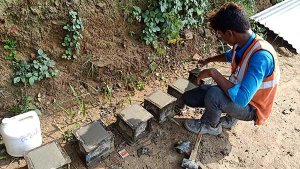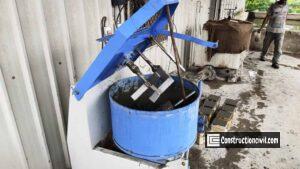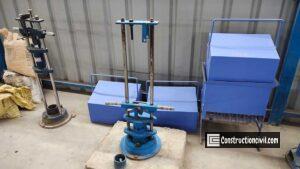What are Bridges?
Bridges, Over bridges, ROBs, RUBs, Viaducts etc. types of bridges are those structures that maintain the continuous movement of road, railway, pedestrian traffic and other moving loads over an obstacle such as a river, channel, highway, railway track, valley etc. The most common types of Bridges based on their operation are as under.
Types of Bridges Based on Operation:
River Bridge:
When such a structure carries road and railway traffic or a pipeline over the river, channel, valley etc. known as River Bridge. Generally, these types of river bridges consist of long-span PSC girders to miniseries the Bridge construction cost and time.
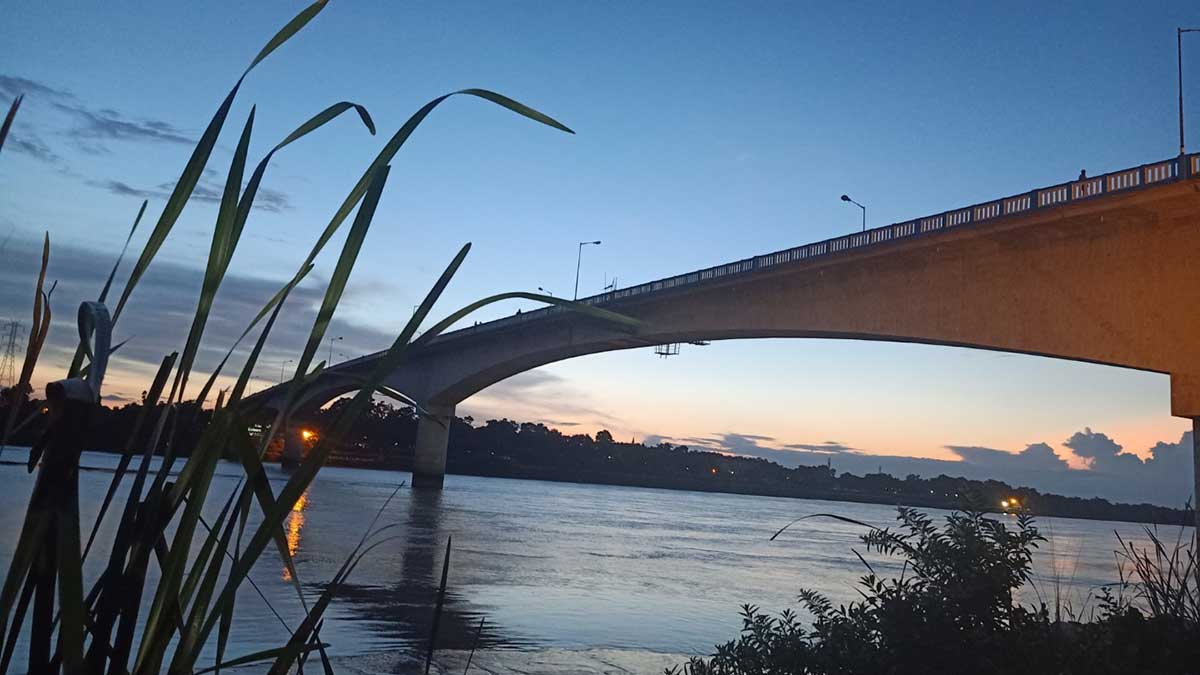
Also, Read: Blowholes/Surface voids/Bugholes in Concrete Surface
Over Bridge:
When such a structure carries road, and railway traffic or a pipeline over another communication system like roads or railways known as over bridge, these types of bridges are constructed in an urban area to miniseries the traffic jam and accidents.
Viaduct:
These types of structures carry road and railway traffic over a busy locality area keeping the activities of the area below the viaduct uninterrupted. These types of approach bridges age generally constructed with river bridges, ROBs etc.
Flyover:
These types of bridges structure carry road traffic over one or several road intersections keeping the activities of the area below the Flyover uninterrupted. This type of structure is generally provided to speed up the movement of through traffic.
ROB / RUB Types Bridges:
The road Over Bridge(ROB) / Road Under Bridge(RUB) — When bridging type structures carrying vehicular traffic over a railway track, such bridges are called ROB, and when such bridges take railway traffic over a road, then the structure is called RUB.

Also, Read: Rusting of Iron Rebar in Concrete – Special Repairing
Note: In this article, whenever we use the word bridge, the same will cover all such similar structures.
Types of Bridges based on the Bridge Building Materials:
The most common types of bridges based on bridge-building material are as follows.
Timber bridge:
Timber bridge is one of the first forms of bridge. The primary construction material uses for the bridge is timber or wood. We are following the above bridge-building technology from the ancient edge.
Masonry RUB Types Bridges:
Masonry types Bridges is a bridge where the primary bridge-building materials that use is natural stone or brick. The main load-bearing component of a masonry bridge is the arch.

Reinforced concrete(RCC) Types Bridges:
This type of bridge is well suited for the construction of highway bridges, flyovers, viaducts etc. and is a monolithic structure where the reinforcing steel is placed into the forms and a concrete mix is poured into the forms. The rebar extends beyond the form to allow for the construction joint to the next section to be poured.
RCC members are consists of concrete of different grade and are reinforced with MS or HYSD bar where concrete basically withstands the compression, whereas the tension is taken by reinforcement.
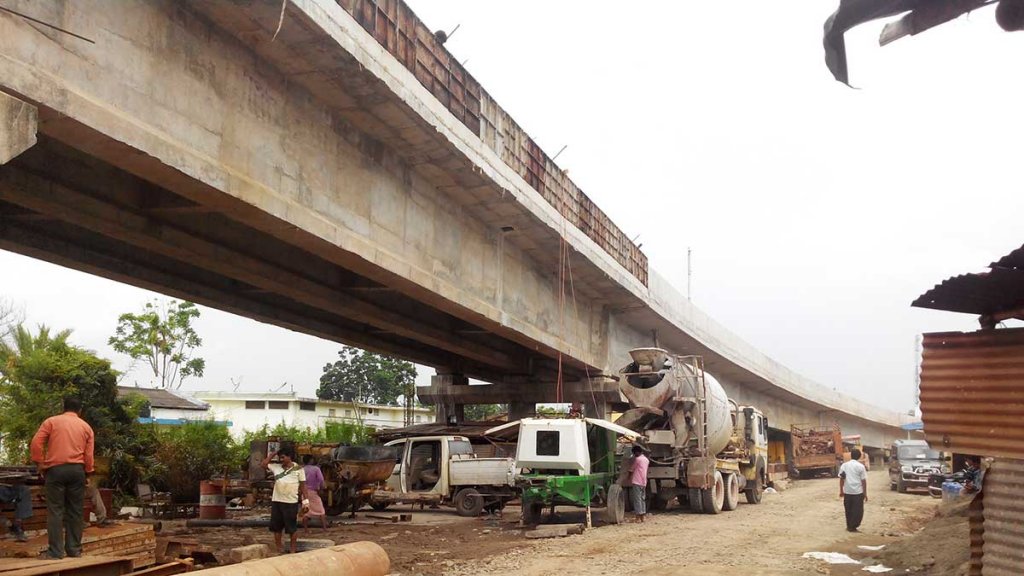
Prestressed concrete(PSC) Types Bridges:
In PSC, a prestressing force that is applied to the concrete member is known as axial compression. After the application of the load, the developed stresses into the member is opposite to those produced by the external loads such as dead and live loads which have to carry and for which the structure is to be designed. With the help of this technique, the strength of the structural member can be considerably increased since a part of the stresses generated by the dead and live loads is cancelled by the prestressing force.
Also, Read: What is Prestressing of Concrete? – Method with Calculation
Composite: RCC / PSC / Steel Types Bridges:
In RCC slab and girder bridges, the deck slab not only transfers the superimposed load to the supporting girders through transverse bending but also acts as the flange of the T-beam to withstand longitudinal bending moments. Concrete being good in compressive stress, the deck slab takes nearly the entire compressive stress due to longitudinal bending of girders.
- In these types of bridges, the deck slab is merely resting on prefabricated girders, either steel or concrete.
- No benefit can be exerted unless the cast-in-situ deck slab is made monolithic with the prefabricated girders by some mechanical means.
- This is accomplished by the use of “Shear connectors” which make the two units monolithic.
Special Bridges: Extradosed / Cable-Stayed / Suspension Types Bridges:
The extradosed is defined as the uppermost surface of the arch. An extradosed bridge external tendons were placed above the deck instead of within the cross-section as would be the case in a PSC girder bridge. The main difference between the extradosed bridge and the cable-stayed bridge is the tower height and cable inclination. Extradosed bridges are distinguished by a low live load stress range in the stay cables.
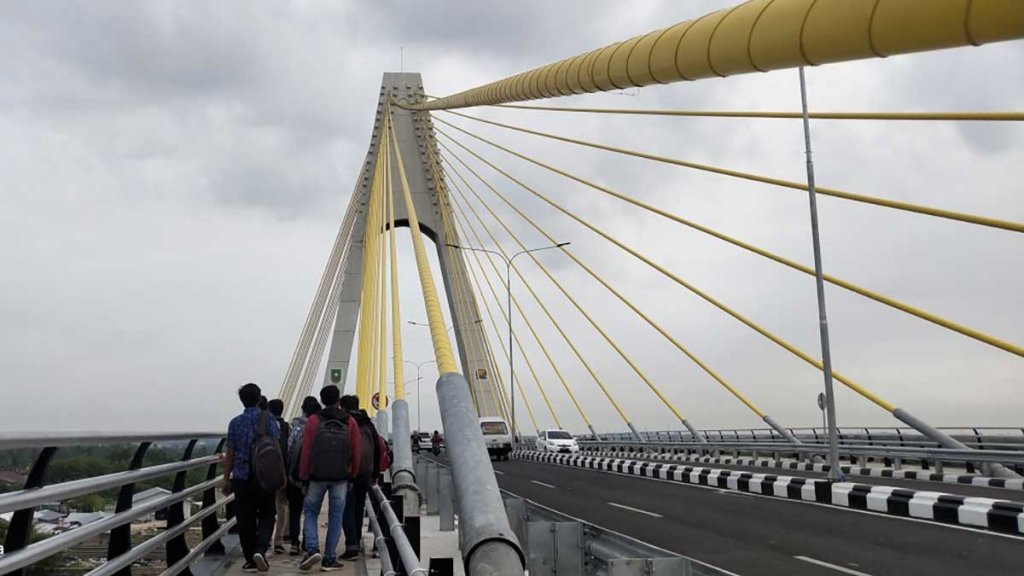
Also, Read: PSC Girder Grouting Methodology
Types of Bridges based on Structural Arrangement:
Arch Types Bridges:
Arch types of bridges are attractive, functional, and a pleasure for the tourist to drive over. Long-span arch bridges over deep valleys have no contestants as far as aesthetics is concerned. Arch bridges are better viewing than truss bridges. Many of the masonry arch bridges made for the last two thousand years are in the heart of cities whose residents consider these bridges not only necessary for commerce but also for their impressive looks.
- Above types of bridges are unfavourable that masonry arches, in general, will not be constructed in today’s environment since stonework has become too expensive.
- Arch types bridges are generally constructed between two abutments; sometimes there may be a series of arches with several numbers of the intermediate pier.
- In an arch type bridge a curved structural element spanning an opening and serving as a support for the loads above the opening.
Followings are the types of arch bridges:
- Two hinge
- Three hinge
- Fixed
- Bow String Girders: Tied Arch
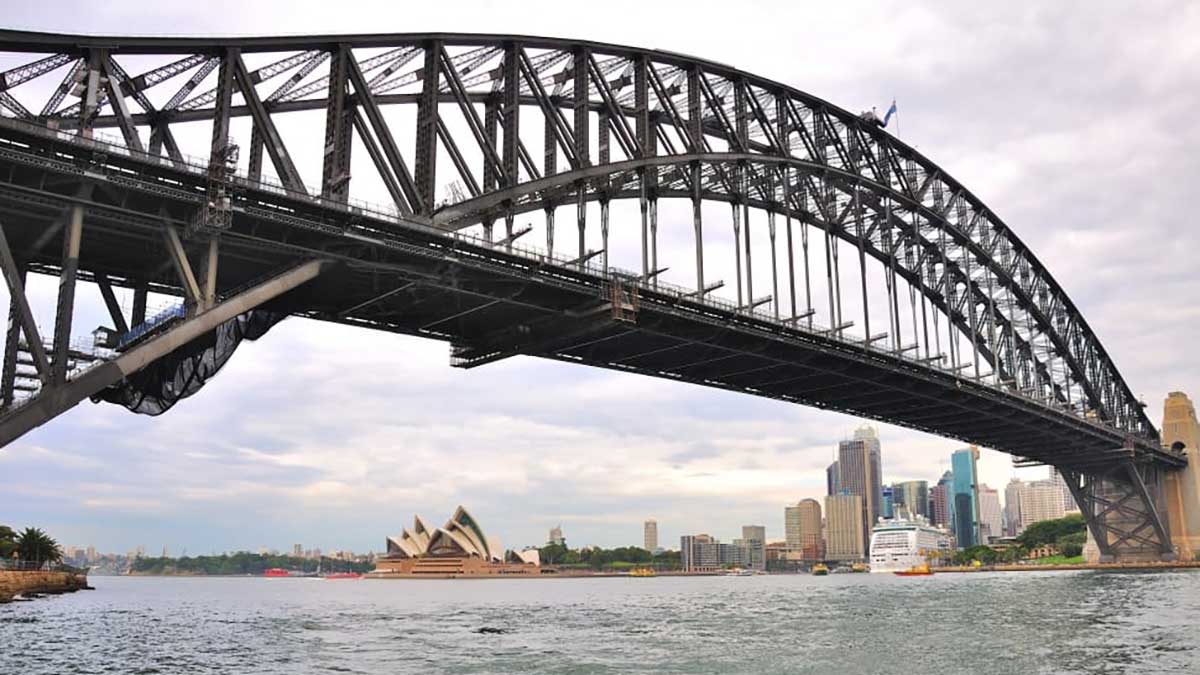
Simply Supported Solid Slab Types Bridges:
Simply supported solid slab types of bridges are one of the oldest super-structure types of bridges. As per the hydraulic study, simply supported slab spans are better than box culverts. Because of its short span length, the substructure cost is high. Sometimes choosing this type of structure is not the right choice from an economic design aspect. Simply supported span bridge can become an excellent resolution for narrow and low headroom stream crossings where occasional flood is expected.
Box cell Bridge Types:
Box cell bridges are generally used in road underpass or subways, cattle crossing, and channels where the scour is negligible or in canals where the velocity is non-scoring and non-silting providing adequate passage for the water. The number of cells and shape of the box cell bridge selection is based on hydraulic performance, high flood level, and finished road level.

Continuous Span Bridges:
Where the foundation of a structure can be supported on a good rock or where foundation soil is such that differential settlement of supports can be discounted, continuous span super-structure is a perfect solution.
- In such cases, because of continuity, both the span and support design moments are minimised compared to a simply supported super-structure.
- Span range for continuous solid slab bridges is between 10.00m to 20.00m, and for slab and girder bridges is between 20.00m to 40.00m. Hollow-box continuous structure up to 100.00m span may be possible.
Balanced Cantilever Bridge Types:
Balanced cantilever type super-structure can cover relatively longer spans than the simply supported super-structures. But unlike continuous spans, small differential settlements under the pier or abutment foundations are not detrimental to the safety of the structures.
- In these types of bridges, box-girder, slab and girder or solid slab comes in the order of preference so far, the capacity for bridging longer spans is concerned.
- Spans of about 40.00m to 100.00m are not uncommon with box-girder bridges while slab and girder bridges of 20.00m to 40.00m are usually met with.
- Solid slab super-structures up to 20.00m spans may be used with advantage without any difficulty.

Also, Read: Elastomeric Bridge Bearing – Advantages & Limitations
Voided Slab Types Bridge:
Voided Slab is a type of RCC slab with air-filled voids to decrease the volume of required concrete quantity. These voids enable more economical construction and have less environmental impact. Another and most advantage of the system is its reduction in slab dead load compared with regular solid slab decks.
Box girder Types bridges:
Box girder bridge consists of the main girder contains a hollow box, and it comprises of two concrete slabs — top and bottom. The box girders are either prestressed concrete, structural steel, or a composite of steel and RCC. The cross-section of the box girder is typically rectangular or trapezoidal.
- Box girder types bridges commonly used for highway flyovers and elevated structures like metro rail.
- Box girders may also be used on cable-stayed bridges.
- They are also used for long-span bridges and where the required torsional stiffness is high. After joining two webs by a common flange at both ends, makes a closed cell that provides enough strength and torsional stiffness.
I / T-Girder Bridge Types:
I-girder/T-girder bridge is a bridge that uses girders of shape like “I” or “T” as the means of supporting its deck. The girders are either reinforced concrete, prestressed concrete or structural steel. The deck slab which is supported by a group of I/T-girder may be of RCC deck slabs, steel deck slabs, composite deck slabs, and PSC deck slabs on which vehicles and people pass.
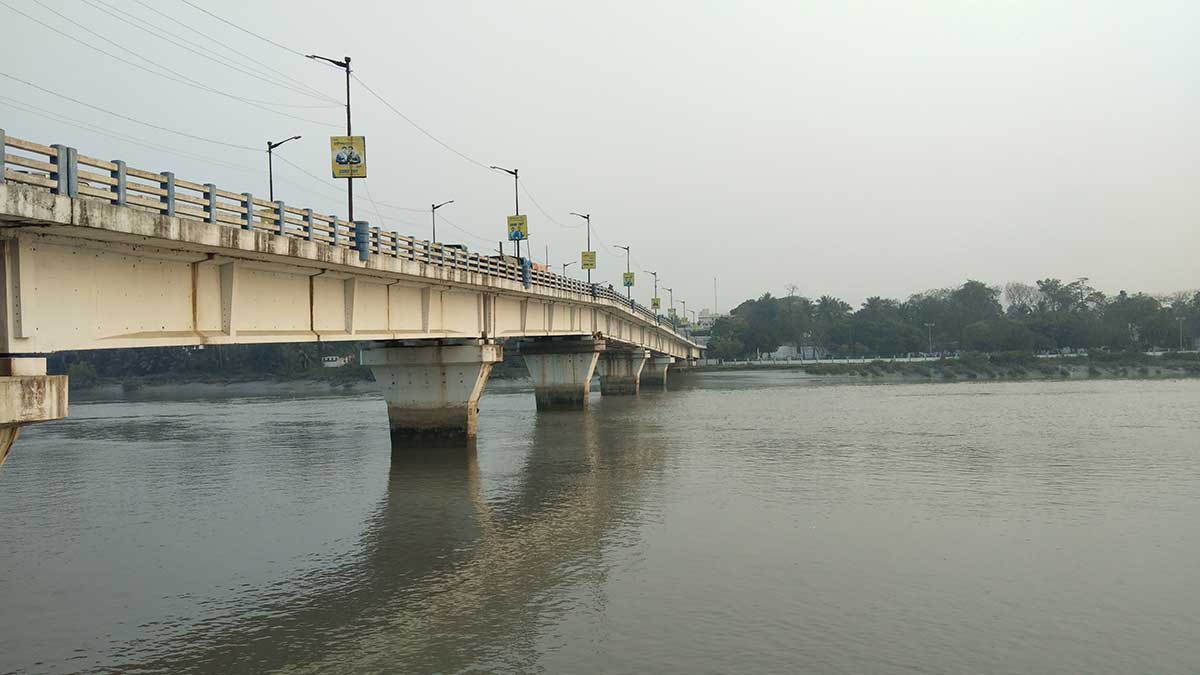
Portal-Frame Bridge Types:
Similar to continuous span bridges, this type of bridge needs unyielding foundation strata such as good rock on which the foundation can rest unless differential settlement may cause detrimental impacts on the safety of the structures.
- In ordinary soil, these types of bridges are not suitable.
- Slab and girder type portal frame super-structure may be found useful for spans between 20.00m-40.00m.
- The span of solid slab portal frame super-structure should not generally exceed twenty-five metres.
- These types of structures are ideally suitable for overbridges and underpasses or subways.
Types of Bridges According to the Span Length:
According to the length of span following Types of Bridges are constructed.
- Minor bridge (length: 8.00m-30.00m)
- Major bridge (Length: 30.00m-120.00m)
- Long-span bridge (Length: Above 120.00m)
Types of Bridges According to the Load-Carrying Capacity:
Following Types of Bridges are generally constructed according to load-carrying capacity.
- Class-3R Bridge, Class-5R Bridge, Class-9R Bridge, Class- 70R Bridge etc.
- Class B bridge
- Class A bridge
- Class AA bridge
Top 10 Most Famous Bridges:
Also, Read: Formula for Development Length, Anchorage and Lapping Length



